Economics Assignment: Impact of Coffee Price on Consumer Choices
VerifiedAdded on 2020/04/21
|5
|752
|278
Essay
AI Summary
This economics assignment analyzes the effects of a coffee price increase on the quantity demanded of coffee and pastries, using the indifference curve and budget line approach. The assignment assumes both goods are normal. It examines how the increase in coffee price impacts consumer choices, dividing the effect into income and substitution effects. The substitution effect shows the change in consumption due to altered relative prices, while the income effect reflects decreased purchasing power. The analysis utilizes a diagram to illustrate the shift in the consumer's equilibrium, demonstrating a decrease in coffee demand. The change in demand for pastries is also discussed, highlighting its dependence on the magnitude of purchasing power and the interplay of income and substitution effects. The paper concludes by summarizing the overall price effect and its impact on consumer behavior.
1 out of 5
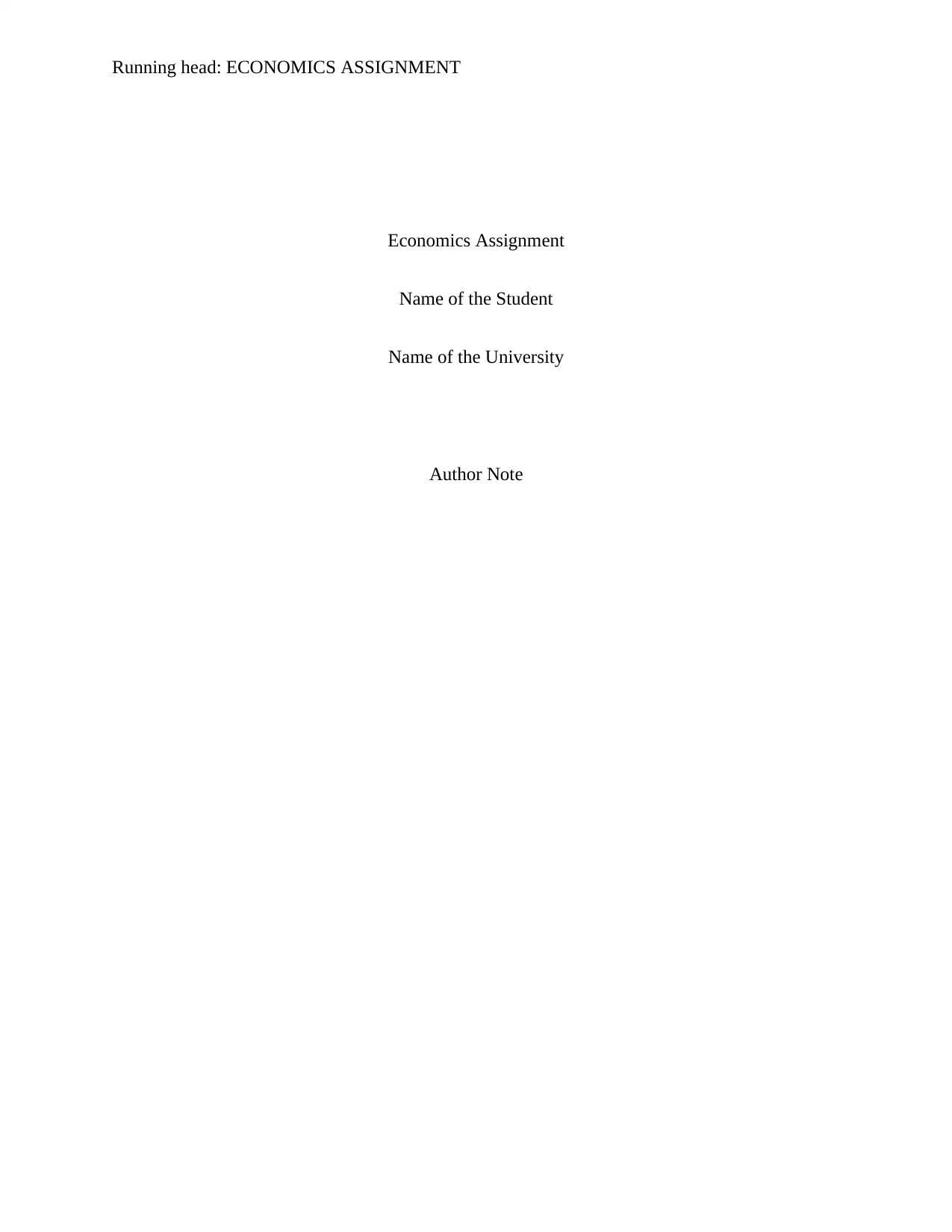
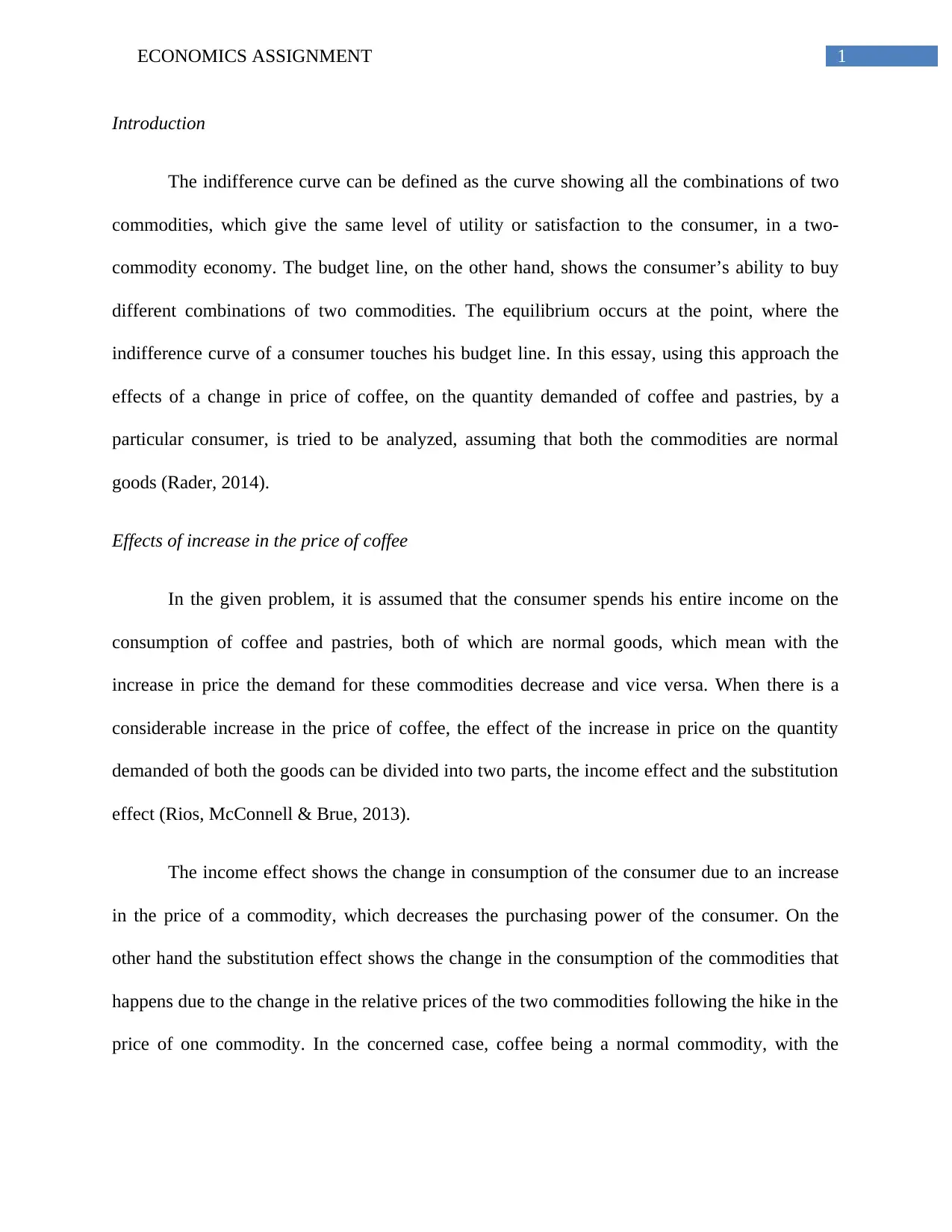
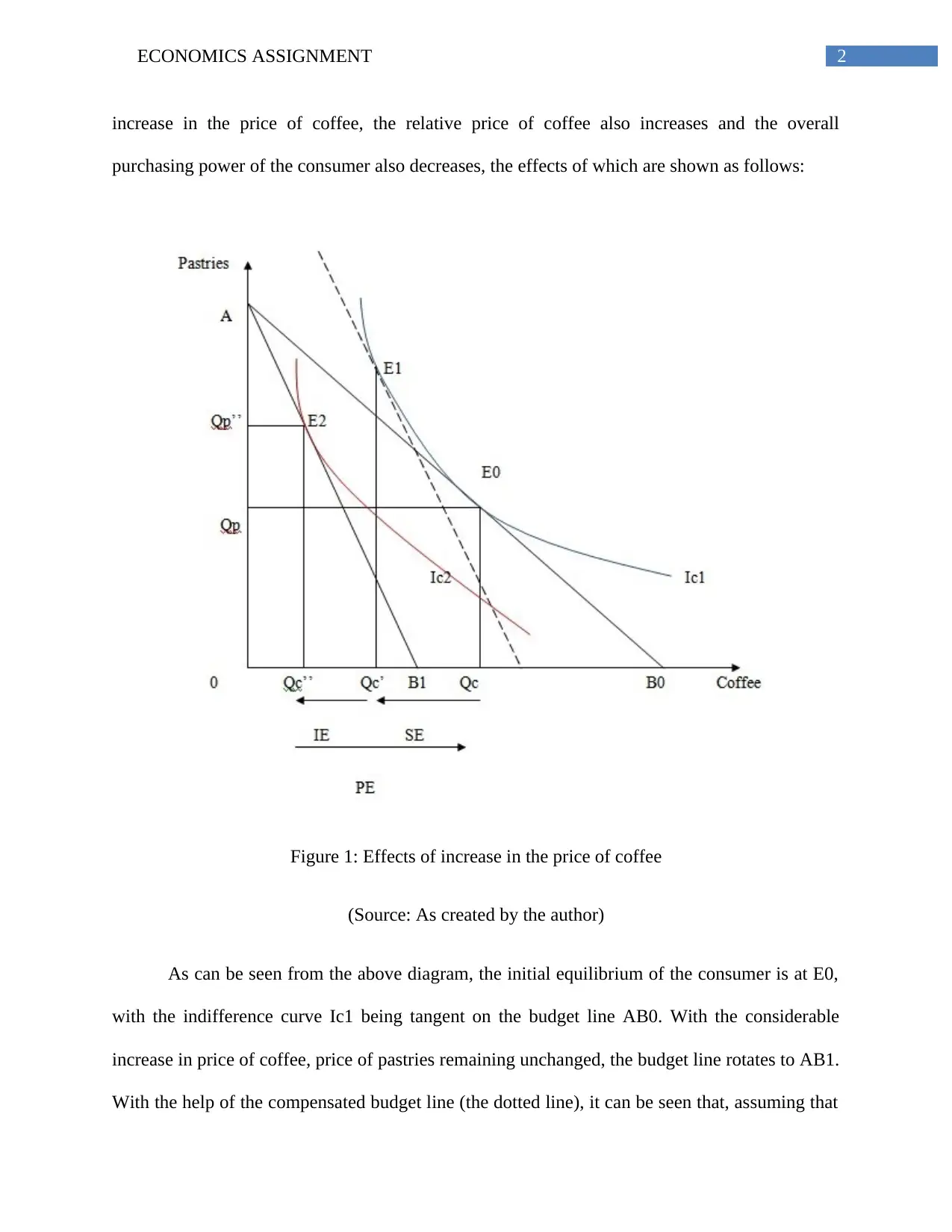

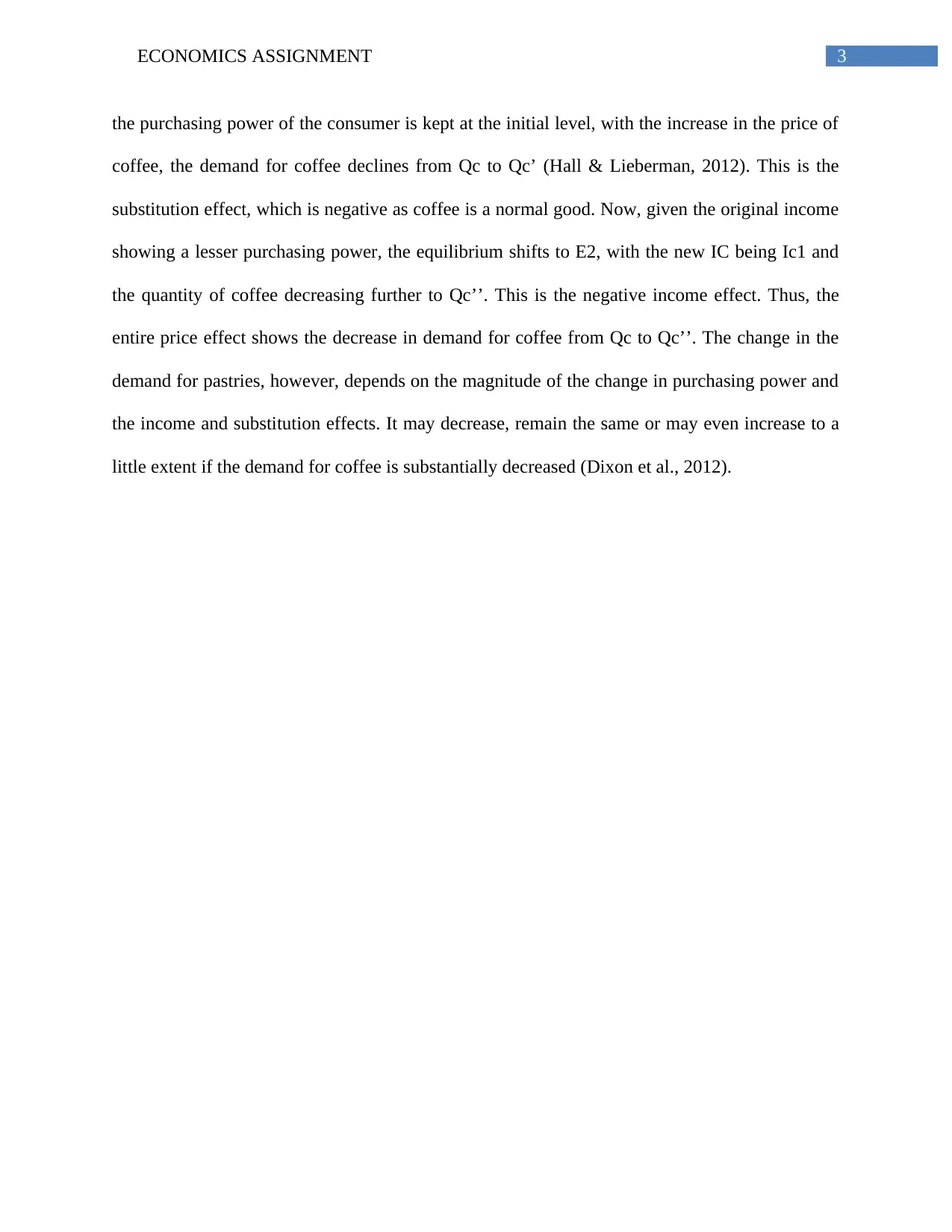
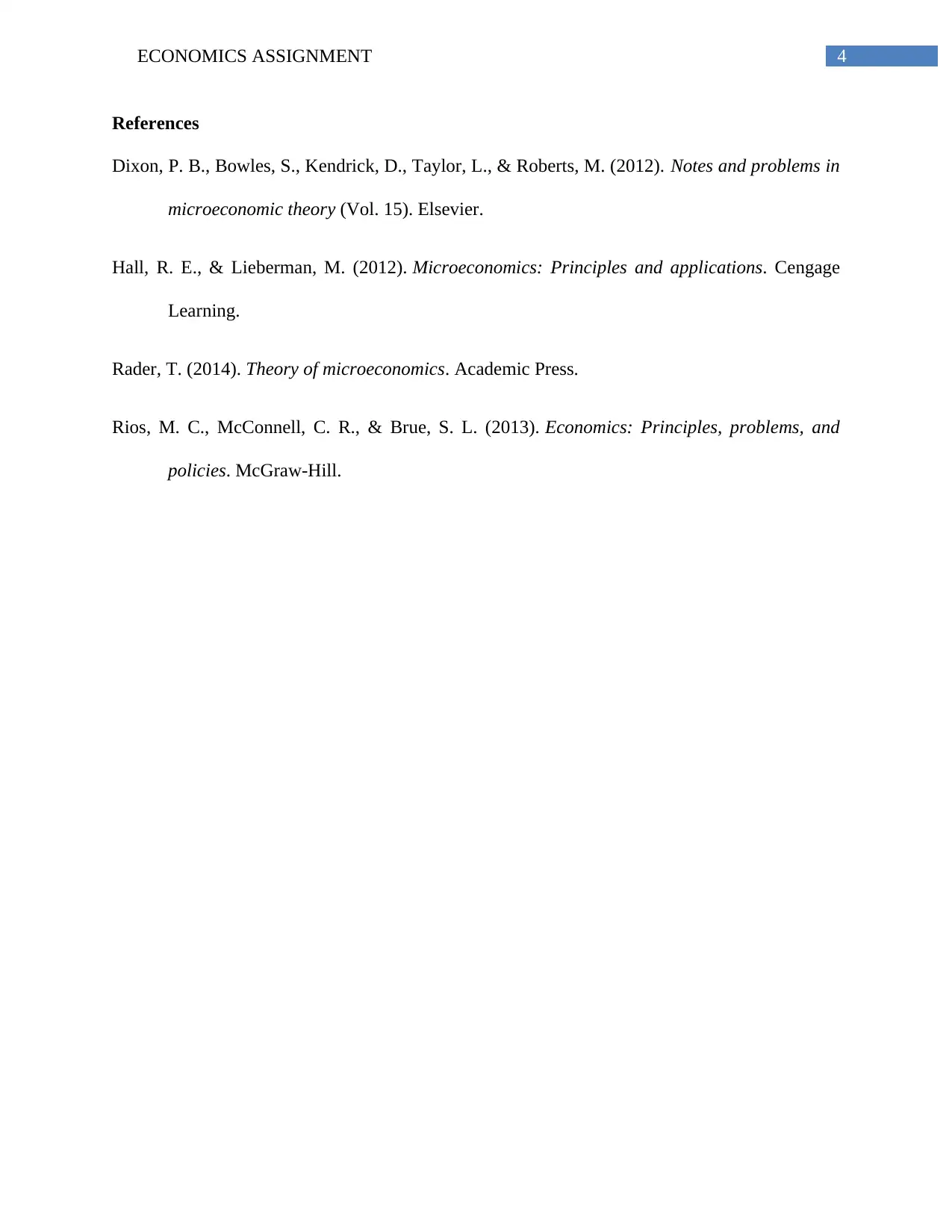






![[object Object]](/_next/static/media/star-bottom.7253800d.svg)